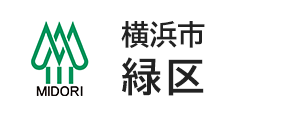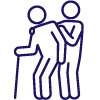The text is from here.
Eastern Area
Last updated on March 7, 2019.
※Alphabetical order
City of Yokohama, Civic Affairs Bureau General Affairs Department Housing Indication Section (currently Civic Affairs Bureau Service Section) published in December 1996, the name of Yokohama. It has been more than 10 years since the issuance, and there are some parts that do not fit the current situation, but due to copyright, the text is the one at the time of publication. The current situation and explanations of words and phrases will be described after the text of each item. Thank you for your understanding.
- At the time of the transfer of Yokohama City in 1939, a town newly established from a part of the character Hiradai, the entire area of Kami-Saruyama, Shinji-mura, Tsuzuki-gun, and the Oaza Shimo-Saruyama. Transferred from the former Kohoku Ward following the reorganization of administrative districts on October 1, 1969. In the old days, it was called Kamisaruyama Village in Tsuzuki-gun, and when the municipal system was enforced in 1889, Nakamura, Tokaichiba Village, Enoki Shimomura, Kubo Village, Terayama Village, Daimura, Shimosaruyama Village, Kamoi Village, Hongoson, Kamisugeda Village, Araishinden merged with Shinji Village and Kamisaruyama. We decided to take the old Oaza name as the town name, but since "Monkey" has no good luck due to "Leave", "Kamisaruyama" except "Monkey", "Kamiyamacho". In the past, the forests around this area were deep, and many monkeys were growing. According to the study of place names, "monkey" is the same as "zare" and means "landslide." The Yokohama Line passes through the north side. The cheese factory in the town is the largest Snow Brand Milk Industry Yokohama Cheese Factory in Orient.
※With the indication of the residence on April 1, 2002, Kamiyamacho became Ueyama 1-chome to 3-chome.
- A town newly established from each part of Ikebemachi, Kamoi-cho, Saedocho, Hakusan-cho, Higashi Hongo-cho, and Sugata-cho, Kanagawa-ku with the enforcement of the residence indication in 1985. In the old days, it was called Kamoi-mura, Tsuzuki-gun, and when the municipal system was enforced in 1889, Nakayama-mura, Tokaichi-mura, Enoki Shimomura, Kubo-mura, Terayama-mura, Dai-mura, Kamisaruyama-mura, Shimo-Saruyama-mura, Hongoson, Kamisugeta-mura, and Araishinden merged into 19, Kamoi. The Tsurumi River flows through the north side of 1-chome, the Yokohama Line passes, and Kamoi Station is located.
- The town was newly established from Kamoi, Shinji-mura, Tsuzuki-gun, when the city was transferred to Yokohama in 1939. Transferred from the former Kohoku Ward following the reorganization of administrative districts on October 1, 1969. In the old days, it was called Kamoi-mura, Tsuzuki-gun, and when the municipal system was enforced in 1889, Nakayama-mura, Tokaichi-mura, Enoki Shimomura, Kubo-mura, Terayama-mura, Dai-mura, Kamisaruyama-mura, Shimosaruyama-mura, Hongoson, Uesugada-mura and Araishinden merged to form Shinji-muraKamoi. The name of the town was the old village.
- A town newly established from a part of Kamoi-cho with the implementation of the land readjustment project in 1972. In the old days, it was called Kamoi, Shinji-mura, Tsuzuki-gun, and when it was transferred to Yokohama in 1939, it became Kamoi-cho. The name of the town was the bamboo production area and the name of the housing complex was "Takeyama housing complex" as the name of the beautiful green housing complex.
- A town newly established from Hakusan-cho and Kamoi 5-chome, Saedocho, Kamiyamacho, and Shirane-cho, Asahi-ku with the enforcement of the house indication in 1990. In the old days, it was called Shimo-Saruyama-cho, Tsuzuki-gun, and when the municipal system was enforced in 1889, Nakayama-mura, Tokaichi-mura, Enoki Shimomura, Kubo-mura, Terayama-mura, Dai-mura, Kamisaruyama-mura, Kamoi-mura, Hongoson, Kamisugeda-mura, Araishinden merged with Shinji-mura and Shimo-mura to become Shimo-mura. At the time of the transfer of Yokohama City in 1939, a part of the character Hiradai will be divided into Kamiyamacho in Shinji-mura, Tsuzuki-gun, and Hakusancho will be established from the remaining areas. The name of the town should be taken from the old village name, and the monkey leads to "leave", so it was named after Shirayama Shrine, which is enshrined in the town. The Tsurumi River flows through the north side of 1-chome, and the Yokohama Line passes. There is Hakusan High-Tech Park at 1-chome and vacuum science and engineering headquarters factory (received the Machinami Landscape Award).
- A town newly established from each part of Higashi Hongo-cho, Sugata-cho, Kanagawa-ku, and Kooki-cho, Kohoku-ku, following the enforcement of the residence indication in 1988. The Yokohama Line passes through the north side of 6-chome. There is Higashi Hongo housing complex on 4-chome.
- A town newly established from Hongo, Shinji-mura, Tsuzuki-gun, when transferring to Yokohama City in 1939. Transferred from the former Kohoku Ward following the reorganization of administrative districts on October 1, 1969. In the old days, it was called Hongo-mura, Tsuzuki-gun, and when the municipal system was enforced in 1889, Nakayama-mura, Tokaichi-mura, Enoki Shimomura, Kubo-mura, Terayama-mura, Dai-mura, Kamisaruyama-mura, Shimosaruyama-mura, Kamoi-mura, Kamisugeda-mura, Araishinden merged to form Shinji-mura. The name of the town should be taken from the old village name to be "Hongo-cho", but since there is already "Hongocho" in the old city of Yokohama, it is east, so the character name is "East". The Tsurumi River runs on the north side, and the Yokohama Line runs on the south side.
Inquiries to this page
Midori Ward General Affairs Department Ward Administration Promotion Division
Phone: 045-930-2220
Phone: 045-930-2220
Fax: 045-930-2225
E-Mail address [email protected]
Page ID: 201-982-028












